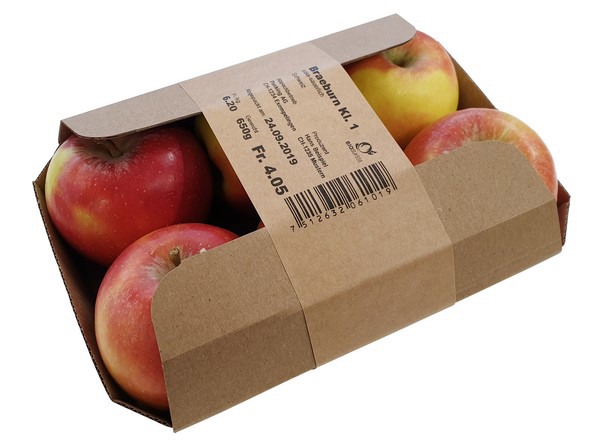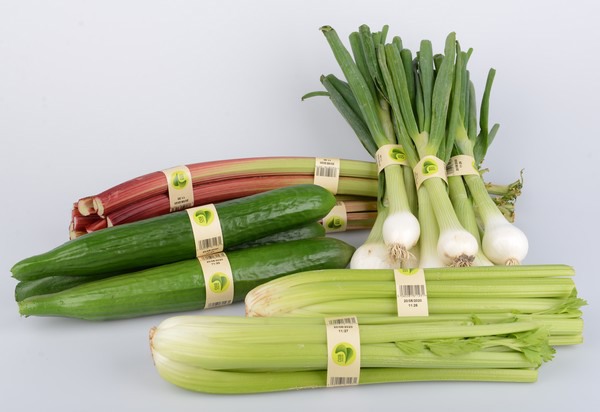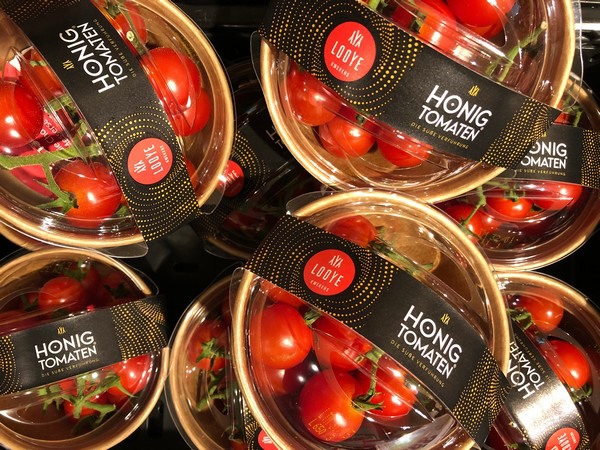The packaging industry is constantly on the lookout for creative, innovative innovations. For a long time, packaging for fresh food had pragmatic purposes such as protection, labelling and a marketing aspect, but today sustainability is even more central. How can the basic requirements for packaging be covered and at the same time little, no or alternative materials be used? Swiss company ATS-Tanner Banding Systems AG specialises in banding and banding machines and supplies these to customers all over the world. The packaging of the future, Content Manager Thomas Weber stated in an interview.
Tray packaging and banding
The classic way to think of banderoles is to bundle elongated products such as celery or rhubarb. But they are much more versatile, Weber explains: "Combination solutions are becoming more and more common. For example, there are customers who pack kiwis, limes or lemons in oblong trays and band them. Incidentally, these trays are increasingly made of compostable material such as palm leaves or sugar cane."
"Solutions in which the banderole additionally takes over the function of a handle also already exist. Fortunately, our customers themselves are also very imaginative when it comes to new and innovative banding solutions instead of costly mixtures of film, adhesive, tape and labels. There are (almost) no limits to the imagination here".

Less food waste: vegetable protective sleeves
Another interesting and very topical combination option: an additional vegetable layer that makes fruit and vegetables last longer and banderoles that take over the branding and the role of information carrier instead of stickers. The protective cover made of plant material from Apeel Sciences in California, for example, is already being used successfully in various countries, and in others it is being tested by major retailers. The edible, odourless and tasteless protective cover ensures that fruit and vegetables have a longer shelf life and thus reduces food waste. Specific applications include treated pineapples, melons and pumpkins. Of course, the combination of treated fruit, peel packaging and banding can also make sense - e.g. for kiwis, tomatoes, peaches or apricots.

Left: Melon in apeel protective layer and banderole
From rented stand-alone machines to fully automatic sorting and packaging lines
The automation of processes is unstoppable in times of labour shortages - and now aggravated by the coronavirus. "Fruit and vegetable producers with manageable quantities often rely on banding machines operated by one employee (here is an example). These machines work on their own. They are delivered, plugged in and put into operation."

The ATS-Tanner Banding Systems team at Fruit Logistica 2020.
However, there is also the option of automatic feeding via a conveyor belt. The machine then takes care of alignment, banding and printing at the same time. Banding can also be integrated into fully automatic production lines and is therefore perfectly suited for small and large players in the fruit and vegetable industry. Our banding machines are used in fully automated lines of Maf Roda Agrobotic worldwide for banding of e.g. apple peels".
For more information:
Thomas Weber
ATS-Tanner Banding Systems AG
Poststrasse 30, CH-6300 Zug
+41 56 676 67 14
t.weber@ats-tanner.ch
ats-tanner.com
